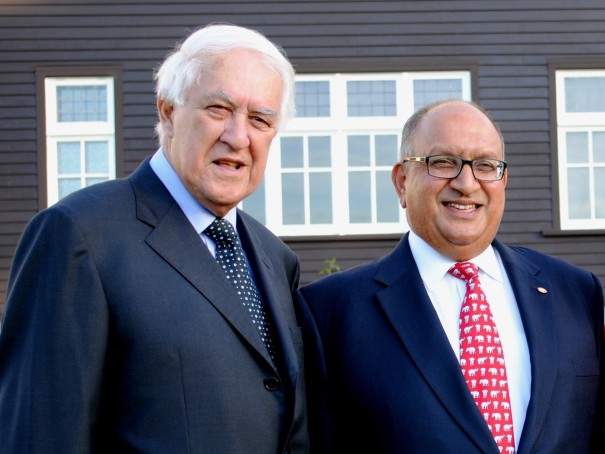Sir Paul Reeves tangi

Ka mihi ahau
Ki te whare e tu nei,
Ki te papa kei waho ra.
E te Rangatira, Pihopa Tā Paora,
Takoto, moe mai, okioki.
E piki ki runga ki to maunga, Taranaki,
Ki te rerenga wairua,
Tau atu ki
Hawaiki nui,
Hawaiki roa,
Hawaiki pāmamao,
Ki te hononga wairua.
Haere rā.
I begin my kōrero in English by greeting everyone in the languages of the realm of New Zealand, in English, Māori, Cook Island Māori, Niuean, Tokelauan and New Zealand Sign Language. Greetings, Kia Ora, Kia Orana, Fakalofa Lahi Atu, Taloha Ni and as it is the morning (Sign)
Thank you for inviting Susan and me to this tangi for Sir Paul Reeves and for asking me to lead the tribute to my predecessor as Governor-General of New Zealand.
Sir Paul stood for social justice imbued by Christian values. Whether as an Anglican minister, as a Bishop and Archbishop of New Zealand and later as Governor-General, social justice for all was his quest. He continued this work on the international stage in places as diverse as Fiji, Guyana and South Africa.
Sir Paul Reeves’ coat of arms has the motto “Whakarongo,” which is the Māori word for listen. Sir Paul was a great listener always looking for ways to advance social justice and many people sought his counsel and help.
I fondly recall Susan and I being invited to dinner at Government House when Sir Paul was Governor-General. Much to everyone’s surprise, he asked each guest to comment briefly on what they thought New Zealand should be doing in relation to a host of contemporary issues. There was no such thing as a free lunch at Sir Paul’s table—everyone had to sing for their supper!
As our third New Zealand resident Governor-General, Sir Paul greatly advanced the idea of the Governor-General being representative of the people of our nation rather being than a person sent here from Britain.
As products of the state education system, Sir Paul, and his wife Lady Beverley, as a cleric and experienced secondary school teacher respectively, were very much representatives of the community. They were drawn out of their lives to undertake a different, difficult and public role and the sacrifices they made in their careers were substantial.
Sir Paul’s appointment in 1985 came at a critical time in our nation’s modern history. Coming in the same year that the Waitangi Tribunal’s jurisdiction was widened to look at historical claims, it was a time when New Zealanders began to look afresh at our nation’s troubled past and to begin the painful process of reconciliation. As New Zealand’s first Governor-General of Māori descent, Sir Paul urged all New Zealanders to address the past and build a new future for our nation as a partnership under the Treaty of Waitangi.
The most poignant symbols of that partnership are the carved pou, or pillar facings, that grace the Taupaepae of Government House in Wellington. Carved in the Taranaki-style, and placed between the carved coats of arms of New Zealand’s Governors-General, they make a strong statement. They emphasise that Government House is a place where Māoritanga is recognised as a fundamental part of the fabric of New Zealand’s history, culture and heritage. The pou provide a warm welcome to all guests to Government House, and particularly Māori visitors.
Sir Paul also worked to make Government House a more welcoming place for all New Zealanders. He hosted the first public open day in October 1989, which was a spectacular success and has been continued by every Governor-General since that time.
In conclusion, Sir Paul’s death has robbed us all of a great New Zealander whose achievements spanned many fields. A man of compassion and quiet determination who, guided by his strong Christian values, worked assiduously to advance the cause of social justice and a vision of a better New Zealand.
But it has also robbed Lady Beverley and the Reeves family of a devoted husband, a loving father and doting grandfather. At this sad time, and on behalf of all New Zealanders, I extend our deepest sympathies to Lady Beverley, the Reeves whanau and the Te Atiawa iwi. No reira, Rau Rangatira mā, Kia ora huihui tātou katoa.
